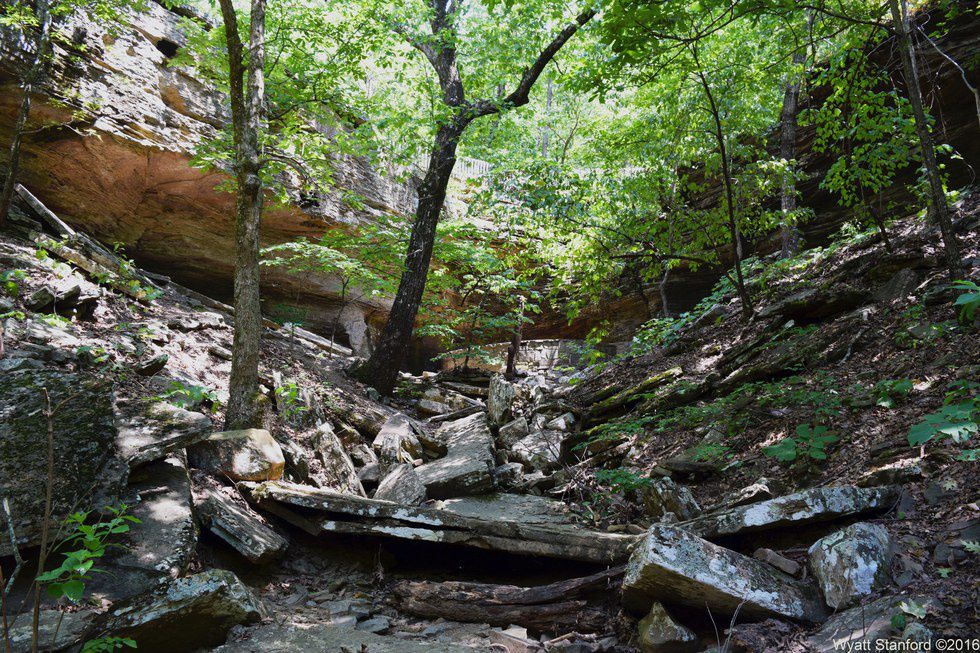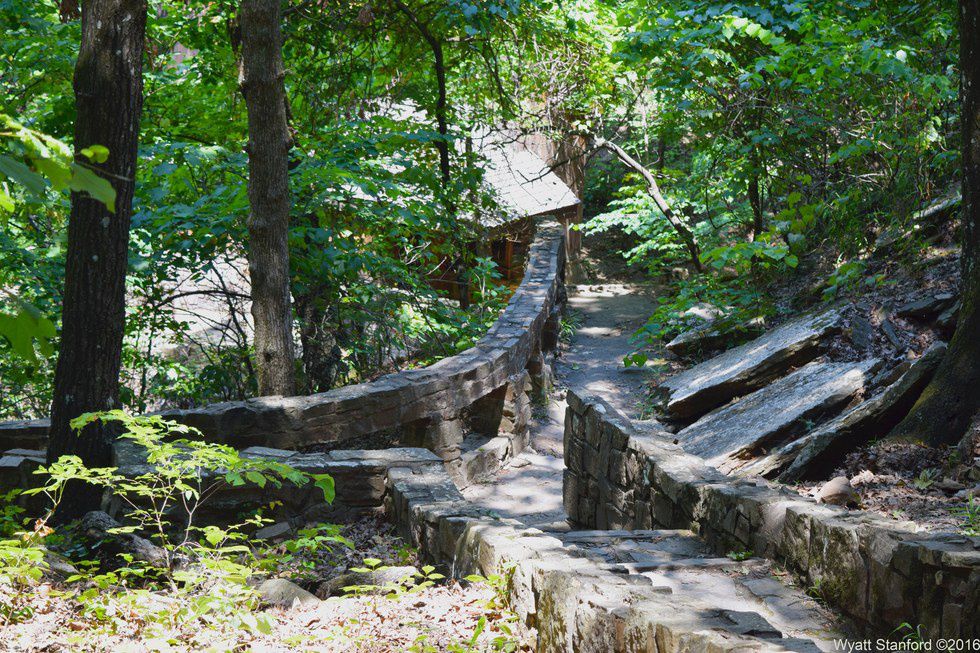Deep in the Ouachita Mountains of LeFlore County, Oklahoma, a little over 12 miles south of Poteau, lies the town of Heavener. Heavener, like many of the towns and cities of Southeastern Oklahoma, is small and quiet. However, it is home to one of the most mysterious sites in all of the state of Oklahoma (and perhaps the United States): the Heavener Runestone.
The Heavener Runestone is a large slab of vertical sandstone on Poteau Mountain with one line of eight Futhark Runes carved on it, dating it at least to the ninth century (if it is authentic). Many write it off as a hoax, but several experts authenticated it.
(Photo Caption: Runestone up close, Heavener Runestone Park)
According to literature obtained from the Runestone Park, which is now in the hands of the City of Heavener after it changed hands from the state in 2011, the stone was first discovered by Choctaw hunters exploring Poteau Mountain in the 1830s, shortly after first coming to Indian Territory.
The inscription consists of eight characters. Frederick J. Pohl asserted six of the runes are from one of the first-established Futhark runic alphabets in Scandinavia circa 500 AD and the other two are medieval dating to around 900 AD. This means Vikings were in the Arkansas River Valley prior to at least 1000 AD.
Once transcribed, the inscription reads “Gnomedal”. “Gnome” translated from Old Norse as “sundial”, “monument”, or “boundary marker”. “Dal” means “valley”. Put together, the inscriptions could mean “monument valley,” which is apt, considering it is found in a ravine on Poteau Mountain. However, some dispute over the transcription saying it is actually “Glome Dal”, or “Valley of Glome”, making it a claim to the land.
(Photo Caption: "Monument Valley")
The first documented sighting of the stone came around 1874 by Wilson King. King was a bear hunter who came upon the stone with two other hunters. The stone became known as “Indian Rock” by the early 1900s.
In 1923, local Carl Kemmerer sent a copy of the inscriptions to the Smithsonian Institute, which responded the characters were runic and the creators had Scandinavian grammar as a guide. In 1928, Heavener resident and runestone enthusiast Gloria Farley visited the stone with Kemmerer. Later, she rediscovered the sight, and it was through her the stone was studied further.
The State of Oklahoma opened the Runestone State Park in 1970. In 1986, Dr. Richard Nielsen began work on American runestones, including the Kennsington Stone of Minnesota. He conducted research and even interviewed runologists at the Univeristy of Oslo, which added to the authenticity of the Heavener stone.
(Photo Caption: Paths to the Runestone)
Many came out against the authenticity of the stone, saying it was carved by Scandinavian immigrants in the 1800s. My argument is people were concerned with just survival at that time. Why would someone waste time and resources carving ancient runes into a stone slab? Better yet, how many rune experts floated around Indian Territory at the time? My guess would be none. Believe what you want about the runestone. I believe it was actually carved by Vikings before 1000 AD. Vikings were resourceful and advanced people, and we know they were in North America around this time.
Skeptics also claim a lack of archaeological evidence around the site to substantiate its authenticity. My answer is maybe the Vikings didn’t stick around long enough or maybe proof exists somewhere else, and we haven’t found it yet.
Despite all the controversy, the stone helps make Southeastern Oklahoma unique. I highly recommend visiting the park. The visitor’s center is highly informative, and the views from Poteau Mountain are breathtaking. Seeing the huge carved runes, I think, could make a believer out of anyone.
For more information about the Heavener Runestone, the website can be found here.(Photo Caption: View from Poteau Mountain)

























